As a geoscientist that was employed in the oil industry for nearly three decades, I still watch the world's oil markets closely. I had been watching the relationship between the price of oil (West Texas Intermediate or WTI) and the price of gasoline for the past couple of years and have suspected that there is somewhat of a disconnect between the two.
Let's open by looking at this graph that shows the price of West Texas Intermediate in red and the price of all formulations of regular gasoline in blue since 1990:
You will notice that except for short periods of time in the mid-2000s that the price of regular gasoline tracked the price of oil quite closely. This was the case for 21 years, until 2011 when the price of gasoline began to track higher than the price of oil with this trend continuing over most of the period between early 2011 and mid-2013 as shown on this graph:
Let's take a closer look at the relationship between the two over the period from 2010 to the present:
How much of a difference does this "new reality" make to the price of a gallon of gasoline? In recent weeks, WTI has dropped from a one year high of $109.62 per barrel in early September 2013 to its current level of $94.00 per barrel, a drop of 14.2 percent. Over that period, the price of gasoline has dropped from around $3.59 a gallon to its current level of around $3.29, a drop of 8.4 percent. While there is somewhat of a disconnect between the price of oil and the price of gasoline, it is far better now than it was in the early part of 2013 as you will see.
At the end of January 2013, WTI was priced at around $98 per barrel and by early March 2013, it had fallen to just over $90 per barrel, a drop of 8.2 percent. Over the same period, the price of a gallon of regular gasoline rose from $3.36 to $3.78, an increase of 12.5 percent. Had the historical relationship between the price of WTI and the price of gasoline held, the price of gasoline in March 2013 should have been around $3.20 per gallon, 15.3 percent lower than it was!
I do realize that there is a lag between changes in the price of oil and the price of gasoline, however, looking back at historical data before 2006, that lag is very short other than for short periods of time after 2001 as shown on this graph:
What could have caused the breakdown in this relationship? Here, thanks to the U.S. Energy Information Administration, could be the answer:
Exports of finished gasoline have risen by a significant amount since late 2010, hitting levels that have not been seen since the Second World War. For example, in December 2009, U.S. refiners exported 9.536 million barrels of finished gasoline. In December 2010, this rose to 16.022 million barrels, then to 19.103 million barrels in December 2011 and fell slightly to 18.299 million barrels in December 2012. Overall, from December 2009 to December 2012, gasoline exports rose by 91.9 percent. Even worse, exports in December 2012 were up 191 percent compared to December 2008!
Who are the beneficiaries of this generosity?
Here is a graph showing the growth in Mexico's imports of United States-produced gasoline:
Here is a graph showing the growth in Venezuela's imports of United States-produced gasoline:
Here is a graph showing the growth in Columbia's imports of United States-produced gasoline:
Here is a graph showing the growth in Guatamala's imports of United States-produced gasoline:
Oddly enough, here is a graph showing the growth in Nigeria's imports of United States-produced gasoline:
Last, here is a graph showing the growth in Ecuador's imports of United States-produced gasoline:
You will notice that, in almost every case, the rise in exports of United States-produced gasoline began to rise in the 2010 to 2011 timeframe. It seems oddly coincident with the disconnect between the price of oil and the price of a gallon of gasoline at the pump, doesn't it?
Just in case you wondered, here is graph showing the number of operating refineries in the United States since 1982:
The number of operating refineries in the United States has fallen from 254 in 1982 to its current level of 139.
Now, let's look at the domestic gasoline situation. The Energy Information Administration measures domestic gasoline consumption using the "weekly product supplied" data as shown on this graph:
Notice that the weekly supply peaked at 22.037 million barrels per day in February 2007. Since then, it has fallen to its current level of around 20 million barrels per day, a 10 percent reduction. Since the beginning of 2011 when exports of U.S.-produced gasoline began to ramp up, domestic gasoline supplied has increased from between 18.8 and 19.8 million barrels per day. Obviously, fewer refineries have become either larger or more efficient and have increased their capability to produce gasoline. Those refineries that remain are exporting a heftier percentage of their gasoline production to offshore consumers.
Here is a graph showing annual gasoline consumption in the United States, noting the slight drop in consumption levels since 2007:
Here is a graph showing the drop in gasoline consumption on a year-over year basis (in dark grey):
Notice that while gasoline consumption dropped by just over 0.2 million barrels per day in 2011, it is expected to fall by less than 0.1 million barrels per day in 2014, a drop of only 0.4 percent. Since 2007
Gasoline consumption fell due to increased overall fleet efficiency and high prices which dampened the enthusiasm for light vehicle travel. While consumption did fall, it didn't fall by as much as exports rose, suggesting that the current disconnect between the price of oil and the price of a gallon of gasoline could be related, in part, to the increased exports of gasoline.
I realize that there are many interrelated factors at play in the world of gasoline supply, demand and pricing, however, the coincidence between elevated prices and elevated exports is compelling. In the future, when we read that gasoline prices are high because of refinery maintenance or shutdowns, perhaps we can reflect on the fact that United States refiners have tripled their exports of gasoline to other nations over the past few years, tightening the domestic supply and making American motorists more vulnerable to shortages that push the domestic price of gasoline higher, out of step with the price of the raw product.
Click HERE to read more of Glen Asher's columns
You can publish this article on your website as long as you provide a link back to this page.


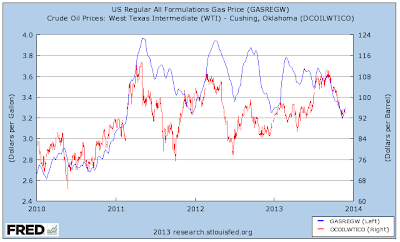
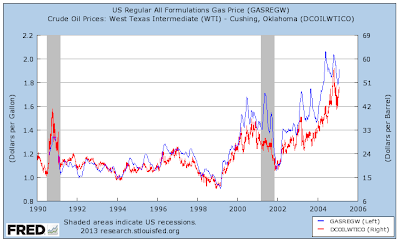
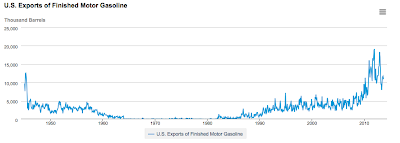
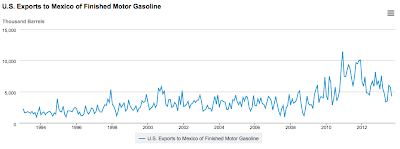

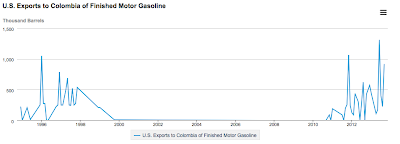

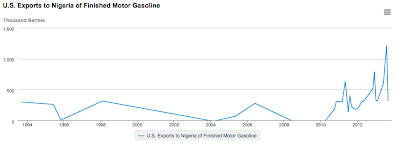
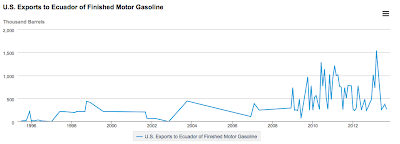
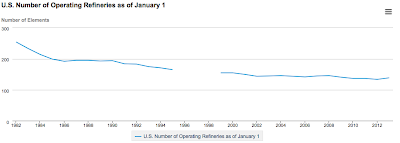



Be the first to comment